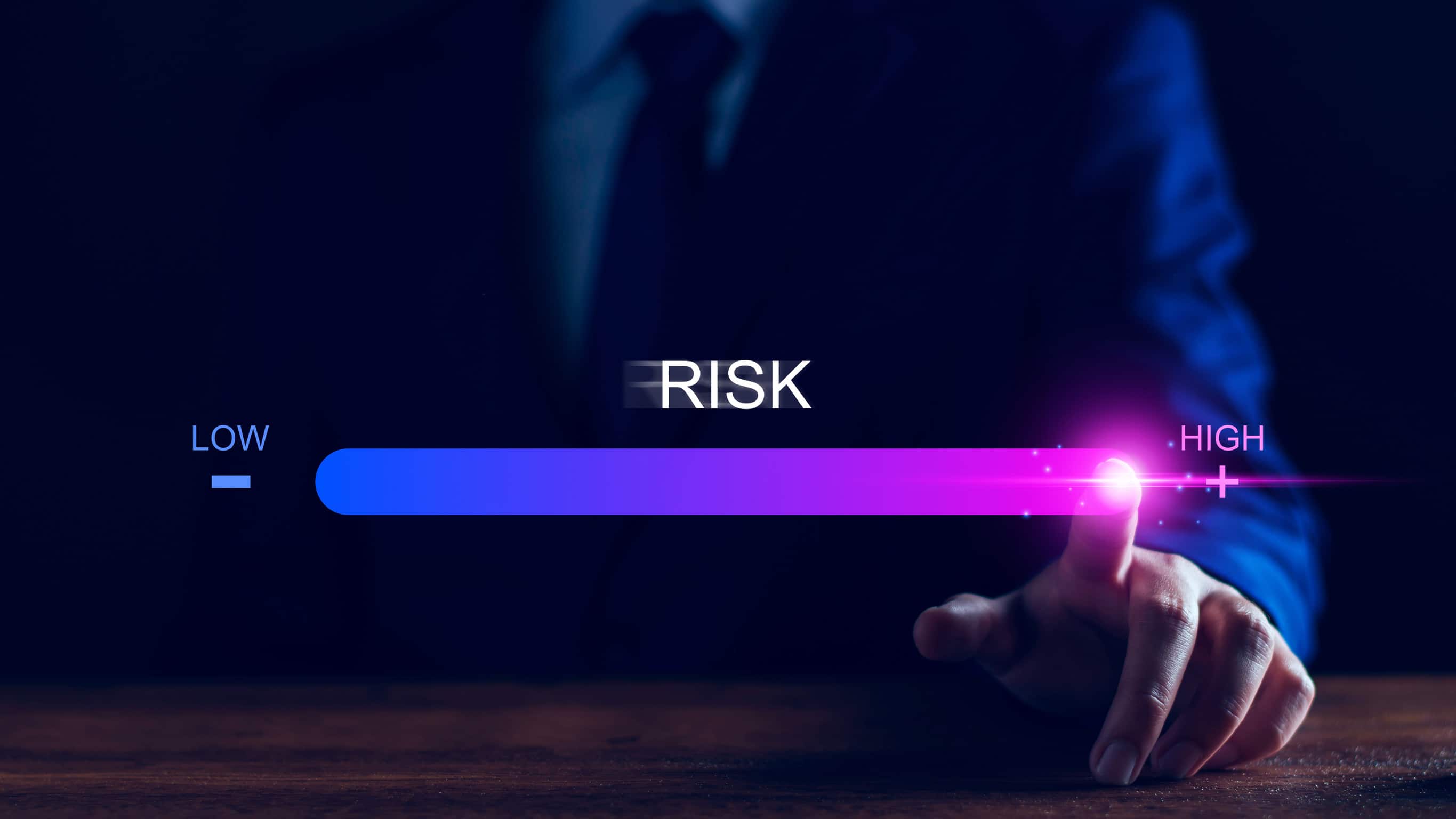In today’s digital and data-driven world, financial disaster recovery is not a luxury, it is a mission-critical requirement. For hedge funds and investment firms operating in Stamford, Connecticut, a region known for its dense concentration of financial institutions, an effective disaster recovery plan is essential for regulatory compliance, investor confidence, and long-term business continuity.
Hedge fund IT continuity involves more than just backing up data. It demands a strategic, well-documented approach that ensures uninterrupted operations in the face of cyberattacks, natural disasters, equipment failures, or even human error. With financial transactions occurring around the clock, Stamford hedge funds must be prepared for any disruption that could affect their ability to manage risk, maintain compliance, or communicate with stakeholders.
This article explores the essential elements of disaster recovery tailored specifically for financial firms in Stamford. We will discuss the unique challenges facing hedge funds, regulatory expectations, critical components of a disaster recovery strategy, and how firms can evaluate and strengthen their current systems for resilience.

Why Disaster Recovery Is Crucial for Stamford Hedge Funds
For hedge funds, system downtime and data loss do more than hinder operations. They compromise trust, jeopardize compliance, and create legal and reputational risks. Stamford’s financial institutions operate in a highly regulated and highly competitive environment, where milliseconds of unavailability can result in significant losses.
What’s at Risk: Downtime, Data Loss, and Regulatory Exposure
In the financial industry, data is more than just information it’s the foundation of compliance, investor trust, and operational decision-making. For hedge funds and investment firms, every transaction must be accurately recorded, securely stored, and readily accessible to satisfy both internal reporting requirements and external regulatory obligations.
When systems go down or data becomes compromised, the consequences are immediate and far-reaching. Unplanned outages can halt trading activity, delay fund operations, and jeopardize the accuracy of historical data used in audits and investor reporting. According to a study by the Ponemon Institute, the average cost of a data center outage exceeds $700,000, with the most significant contributors being lost productivity, reputational harm, and legal or regulatory penalties.
For Stamford hedge funds managing substantial portfolios, the impact can be even more severe. Delayed trades and failed transactions can erode client confidence and introduce long-term compliance challenges. More importantly, data loss during a recovery window can lead to violations of SEC and FINRA regulations, particularly if sensitive client records or financial statements are affected.
An effective financial disaster recovery strategy ensures that hedge funds are not only able to recover quickly but also retain the integrity, availability, and traceability of their data, key pillars of both investor accountability and regulatory compliance.
Real-World Disruptions That Underscore the Need for Disaster Recovery
Recent events across the financial sector have made it clear that no firm is immune to disruption. Ransomware attacks have rendered trading systems inaccessible, while natural disasters such as hurricanes and severe floods have shut down data centers and office operations for days.
For hedge funds in Stamford, these scenarios are not distant hypotheticals, they represent credible threats that can occur without warning. Whether it’s a targeted cyberattack or a widespread power outage, the result is the same: downtime, data risk, and loss of investor confidence.
A well-structured disaster recovery plan helps mitigate these risks by ensuring that critical data is securely backed up, infrastructure is mirrored in alternate locations, and recovery protocols are ready to be executed without delay.

Understanding the Unique Risks Financial Firms Face in Stamford
Stamford is not only a hub for hedge funds but also part of a broader metropolitan area that includes New York City. While proximity to the financial capital of the world brings opportunity, it also introduces specific regional and sector-based risks that disaster recovery plans must address.
Geographic and Environmental Risks in Fairfield County
Connecticut is no stranger to extreme weather events, including hurricanes, coastal flooding, and winter storms. These environmental risks can lead to power outages, server damage, and prolonged network failures. A single storm has the potential to bring hedge fund operations to a standstill if contingency plans are not in place.
Disaster recovery strategies must include geographically diverse data backups and alternate workspace options outside affected zones to maintain operational continuity.
Cybersecurity Threats Targeting Hedge Funds
Cybercriminals increasingly target hedge funds because of the high-value transactions, sensitive data, and limited internal IT resources. Stamford firms are especially at risk as their profiles make them attractive targets for ransomware, phishing, and advanced persistent threats (APTs).
Disaster recovery is closely tied to cybersecurity. A breach may not only result in stolen data but also system compromise requiring full system recovery. Financial firms must be ready to contain, respond to, and recover from breaches swiftly to meet regulatory expectations and restore stakeholder confidence.
Regulatory Pressures from the SEC and FINRA
Disaster recovery for hedge funds is not merely a technical best practice, it is a regulatory necessity. The SEC (Securities and Exchange Commission) and FINRA (Financial Industry Regulatory Authority) both expect investment firms to maintain formal, tested business continuity and disaster recovery plans.
In Stamford, where financial firms are frequently audited or scrutinized, compliance with these expectations requires more than a checkbox approach. Firms must demonstrate their ability to resume operations with minimal disruption and maintain data availability, integrity, and confidentiality throughout the recovery process.
Key Elements of a Hedge Fund Disaster Recovery Plan
To build an effective disaster recovery strategy, financial firms must go beyond generic IT plans and develop a customized framework that reflects their risk profile, compliance obligations, and operational needs.
Data Backup and Cloud Redundancy Strategies
One of the foundational aspects of any recovery plan is ensuring secure and redundant data storage. Hedge funds should implement automated, encrypted backups of critical systems and files across multiple locations, ideally including secure cloud environments.
Cloud redundancy allows firms to maintain access to trading platforms, financial models, and client records even if physical infrastructure becomes unavailable. A multi-cloud approach or hybrid model often offers the best balance of performance and resilience.
Communication Plans for Stakeholders and Investors
In a disaster scenario, maintaining clear and timely communication with clients, regulators, employees, and partners is essential. A good disaster recovery plan should outline specific communication workflows, escalation paths, and designated roles to manage messaging during disruptions.
Investors expect transparency and quick updates during emergencies. Firms that can provide clear updates demonstrate competence, preparedness, and accountability all critical to long-term trust.
Recovery Time Objective (RTO) vs. Recovery Point Objective (RPO)
Every hedge fund should define two core metrics in their disaster recovery planning:
- Recovery Time Objective (RTO) is the maximum acceptable time a system can be down before causing unacceptable damage.
- Recovery Point Objective (RPO) is the maximum age of files that must be recovered to resume normal operations.
These benchmarks guide the selection of technologies, backup schedules, and response protocols. A fund that trades frequently may have an RPO of minutes, whereas a research-heavy firm may have slightly more flexibility.
Compliance and Regulatory Requirements for Disaster Recovery
Disaster recovery is not just about technology, it’s about meeting industry regulations and protecting stakeholder interests. For hedge funds and investment firms in Connecticut, particularly those operating in Stamford, aligning with regulatory expectations is essential to avoid penalties and reputational damage.
Disaster Recovery Requirements Under SEC Rule 206(4)-7
The Securities and Exchange Commission (SEC) requires registered investment advisers to implement written policies and procedures designed to prevent violations of the Investment Advisers Act. While the rule doesn’t spell out disaster recovery in technical detail, it mandates that firms maintain business continuity plans that account for unforeseen events that could disrupt operations.
This includes data preservation, backup infrastructure, and clearly defined recovery protocols. The SEC has issued enforcement actions against firms that failed to maintain access to client information or trading capabilities following outages emphasizing the importance of proactive planning.
FINRA Business Continuity Guidelines for Investment Firms
The Financial Industry Regulatory Authority (FINRA) explicitly requires broker-dealers to create and maintain a Business Continuity Plan (BCP) under Rule 4370. This rule outlines the need for firms to plan for events that can cause significant business disruption, including:
- Data center outages
- Cybersecurity breaches
- Natural disasters
- Loss of key personnel
FINRA expects firms to test and update their plans regularly, notify clients during extended disruptions, and maintain access to critical systems and customer records. For Stamford hedge funds operating under FINRA oversight, these guidelines directly shape their disaster recovery architecture.
How to Align DR Plans with Cybersecurity Regulations
In addition to continuity planning, firms must consider cybersecurity-specific frameworks like the SEC’s Cybersecurity and Resiliency Observations and the National Institute of Standards and Technology (NIST) Cybersecurity Framework. Both emphasize the need for firms to detect, respond to, and recover from security events that compromise data or disrupt systems.
Integrating these guidelines into your disaster recovery plan ensures not only compliance, but also a more resilient IT posture capable of withstanding both technical and regulatory audits.

Building a Business Continuity and Disaster Recovery (BCDR) Strategy
Disaster recovery is only one part of the larger picture. Firms must integrate it within a broader Business Continuity and Disaster Recovery (BCDR) strategy that ensures operations can continue without significant interruption even in the face of large-scale disruptions.
Differences Between Business Continuity and Disaster Recovery
While often used interchangeably, business continuity and disaster recovery serve complementary but distinct roles:
- Business continuity focuses on maintaining essential operations during a disruption, such as relocating staff or rerouting communications.
- Disaster recovery centers on restoring IT systems, applications, and data to full functionality after the event has passed.
For Stamford hedge funds, merging both strategies ensures not only that systems are brought back online but also that teams can continue trading, reporting, and communicating throughout the process.
Integrating BCDR into Stamford Hedge Fund Operations
BCDR planning should not be an isolated IT initiative. Instead, it must be woven into the fabric of the firm’s operations with input from legal, compliance, risk management, and executive leadership. The strategy should identify:
- Core functions and services that must be restored first
- Key personnel responsible for executing the plan
- Dependencies on third-party vendors or service providers
- Communication strategies across internal teams and external stakeholders
By tailoring this framework to the needs of Stamford-based investment firms, organizations can ensure fast and efficient recovery without sacrificing compliance or client trust.
Testing and Updating Your BCDR Plan Regularly
An untested BCDR plan provides only a false sense of security. Firms should conduct annual or semi-annual testing, including tabletop exercises, live recovery drills, and simulated outages. These exercises reveal:
- Gaps in recovery timing
- Misconfigured backup systems
- Lack of coordination across departments
More importantly, each test should be followed by a post-mortem review, allowing firms to refine their processes and ensure their disaster recovery plan remains aligned with evolving risks and technologies.
Choosing the Right Disaster Recovery Provider in Stamford
Selecting a disaster recovery partner is a decision that carries long-term consequences for hedge funds and investment firms. It’s not just about technology, it’s about trust, expertise, and understanding the financial industry’s specific needs.
What to Look for in a Financial IT Services Partner
Not all IT providers are equipped to support hedge funds. Look for partners who:
- Specialize in financial IT compliance and continuity
- Offer 24/7 monitoring and rapid response teams
- Provide customized recovery strategies based on your RTO and RPO requirements
- Maintain data centers with financial-grade security protocols
A provider familiar with investment firm business continuity in CT will better understand the regulatory, operational, and investor-related stakes of disaster recovery planning.
Questions Hedge Funds Should Ask Potential DR Providers
Before committing to a provider, hedge funds should evaluate them with technical and strategic questions such as:
- How do you ensure compliance with SEC and FINRA standards?
- Can you support hybrid cloud or multi-cloud backup environments?
- What is your guaranteed response time during an incident?
- How often do you test recovery procedures with your clients?
The answers will indicate whether the provider is prepared to meet the demands of a modern financial services firm.
Benefits of Local Support and On-Site Assistance
While remote monitoring and cloud systems are vital, on-site support in Stamford offers additional peace of mind. Local providers can deploy technicians quickly, provide hands-on diagnostics, and work directly with internal teams to resolve issues faster than distant vendors.
This proximity also facilitates stronger collaboration during planning and testing, ensuring your disaster recovery solution is truly aligned with your operational realities.
How Managed IT Services Strengthen Disaster Recovery Readiness
The Value of Proactive Monitoring and Expert Support
Many hedge funds and investment firms in Stamford choose to partner with managed IT service providers to enhance their disaster recovery posture. With systems growing more complex and regulatory demands increasing, relying on an experienced partner ensures that the firm’s infrastructure remains secure, compliant, and resilient at all times.
Managed IT services offer proactive support, continuous monitoring, and issue resolution designed for hedge fund IT continuity. These services go beyond standard IT helpdesks by identifying vulnerabilities before they lead to disruptions and responding swiftly to minimize downtime when incidents occur.
Cloud-Based Solutions That Meet Financial Industry Standards
Cloud infrastructure plays a vital role in modern disaster recovery. Managed providers offer secure cloud environments that are configured to protect sensitive financial data, comply with regulatory frameworks, and maintain operational uptime. These solutions allow firms to recover critical data and resume core functions from anywhere, even if on-premise systems fail.
For Stamford hedge funds, using cloud platforms designed specifically for financial firms ensures that performance, security, and compliance are never compromised during a recovery event.
Why More Stamford Hedge Funds Are Outsourcing Disaster Recovery
The trend toward outsourcing disaster recovery stems from the need for both technical specialization and regulatory alignment. In-house IT teams may lack the depth or bandwidth to implement and maintain a complete disaster recovery plan. A qualified managed service provider brings tools, expertise, and a strategic approach tailored to the needs of hedge funds.
Local providers in Connecticut also offer the benefit of on-site availability, allowing for hands-on support when remote solutions are not enough. This blend of technical capability and geographic proximity makes managed services an increasingly popular choice among financial firms.
Evaluating Your Firm’s Current Disaster Recovery Plan
Conducting a Comprehensive Internal Risk Assessment
Before a financial firm can improve its disaster recovery plan, it must perform a complete internal review. This means examining which systems and operations are critical, how data is currently backed up, and whether response protocols are effective under stress. Stamford hedge funds should regularly conduct risk assessments to identify where gaps exist in their current strategy.
The focus should be on verifying that key systems are protected, backups are stored across different regions, and recovery methods are tested under realistic conditions.
Creating a Roadmap for Improvement
Once gaps are identified, the next step is to build a roadmap for improvement. This involves prioritizing the systems that require faster recovery times, modernizing backup infrastructure, and ensuring compliance with industry standards like SEC Rule 206(4)-7 and FINRA Rule 4370.
Recovery objectives must be clearly defined. Firms need to know how long they can be offline and how much data loss is acceptable. Aligning recovery priorities with operational goals ensures the firm can meet both regulatory and client expectations during a disruption.
Collaborating with Experts to Future-Proof Your Operations
Creating a disaster recovery plan is not a one-time project. As threats evolve and systems change, your strategy must adapt. By working with IT professionals who specialize in financial disaster recovery, firms can build flexible, scalable plans that evolve with their business.
Stamford hedge funds benefit most from a collaborative approach, one that combines internal operational insights with external technical expertise. This ensures that business continuity and IT recovery are aligned, effective, and always ready.
FAQ: Financial Disaster Recovery and Hedge Fund IT Continuity
What is the difference between disaster recovery and business continuity?
Disaster recovery focuses on restoring IT infrastructure and data after an unexpected event. Business continuity is the broader plan to ensure that the firm continues operations during and after the disruption. Both are essential components of a comprehensive strategy for hedge funds and financial firms.
Why do Stamford hedge funds need a disaster recovery plan?
Hedge funds in Stamford operate in a fast-paced, highly regulated environment. Without a disaster recovery plan, they risk data loss, compliance failures, and operational downtime, all of which can damage investor confidence and financial performance.
How often should disaster recovery plans be tested?
Testing should be conducted at least annually, though semi-annual or quarterly testing may be necessary for firms with more complex systems or higher regulatory risk. Testing helps identify weaknesses and ensure staff can execute recovery procedures effectively.
Can managed IT services help meet regulatory requirements?
Yes. Managed service providers that specialize in investment firm business continuity in CT offer solutions designed to meet SEC, FINRA, and cybersecurity standards. Their services often include audit support, documentation, and compliance reporting.
What sets a good disaster recovery partner apart?
A strong partner brings industry-specific knowledge, fast response capabilities, and a clear understanding of financial compliance standards. For Stamford firms, working with a provider that offers local presence and deep expertise in financial services ensures better alignment and responsiveness.
Conclusion: Strengthen Your Disaster Recovery with Expert Support
Effective disaster recovery planning is no longer optional, it is a strategic necessity for hedge funds and financial firms in Stamford. With increasing risks from cyberattacks, system failures, and climate-related events, maintaining operational resilience is essential to preserving compliance, trust, and business performance.
A strong disaster recovery plan starts with a deep understanding of your firm’s systems, risk exposure, and regulatory obligations. It must be actively maintained, regularly tested, and capable of evolving with your business.
Computronix Managed IT Support is a trusted partner for financial firms looking to strengthen their disaster recovery posture. With extensive experience in financial disaster recovery, hedge fund IT continuity, and investment firm business continuity CT, Computronix provides tailored solutions that support your systems, protect your data, and keep your operations running smoothly no matter what challenges arise.










